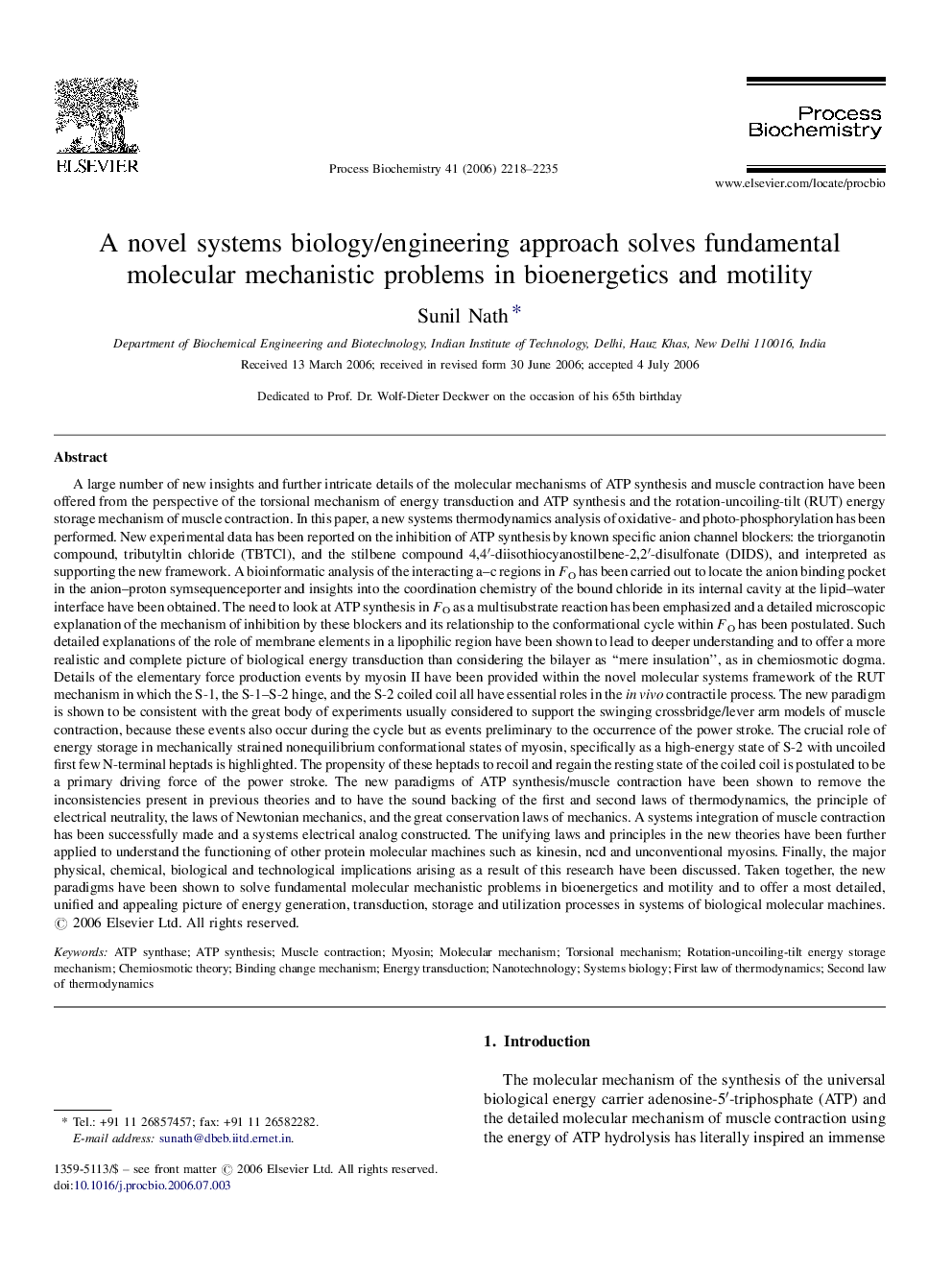| کد مقاله | کد نشریه | سال انتشار | مقاله انگلیسی | نسخه تمام متن |
|---|---|---|---|---|
| 36270 | 45126 | 2006 | 18 صفحه PDF | دانلود رایگان |

A large number of new insights and further intricate details of the molecular mechanisms of ATP synthesis and muscle contraction have been offered from the perspective of the torsional mechanism of energy transduction and ATP synthesis and the rotation-uncoiling-tilt (RUT) energy storage mechanism of muscle contraction. In this paper, a new systems thermodynamics analysis of oxidative- and photo-phosphorylation has been performed. New experimental data has been reported on the inhibition of ATP synthesis by known specific anion channel blockers: the triorganotin compound, tributyltin chloride (TBTCl), and the stilbene compound 4,4′-diisothiocyanostilbene-2,2′-disulfonate (DIDS), and interpreted as supporting the new framework. A bioinformatic analysis of the interacting a–c regions in FO has been carried out to locate the anion binding pocket in the anion–proton symsequenceporter and insights into the coordination chemistry of the bound chloride in its internal cavity at the lipid–water interface have been obtained. The need to look at ATP synthesis in FO as a multisubstrate reaction has been emphasized and a detailed microscopic explanation of the mechanism of inhibition by these blockers and its relationship to the conformational cycle within FO has been postulated. Such detailed explanations of the role of membrane elements in a lipophilic region have been shown to lead to deeper understanding and to offer a more realistic and complete picture of biological energy transduction than considering the bilayer as “mere insulation”, as in chemiosmotic dogma. Details of the elementary force production events by myosin II have been provided within the novel molecular systems framework of the RUT mechanism in which the S-1, the S-1–S-2 hinge, and the S-2 coiled coil all have essential roles in the in vivo contractile process. The new paradigm is shown to be consistent with the great body of experiments usually considered to support the swinging crossbridge/lever arm models of muscle contraction, because these events also occur during the cycle but as events preliminary to the occurrence of the power stroke. The crucial role of energy storage in mechanically strained nonequilibrium conformational states of myosin, specifically as a high-energy state of S-2 with uncoiled first few N-terminal heptads is highlighted. The propensity of these heptads to recoil and regain the resting state of the coiled coil is postulated to be a primary driving force of the power stroke. The new paradigms of ATP synthesis/muscle contraction have been shown to remove the inconsistencies present in previous theories and to have the sound backing of the first and second laws of thermodynamics, the principle of electrical neutrality, the laws of Newtonian mechanics, and the great conservation laws of mechanics. A systems integration of muscle contraction has been successfully made and a systems electrical analog constructed. The unifying laws and principles in the new theories have been further applied to understand the functioning of other protein molecular machines such as kinesin, ncd and unconventional myosins. Finally, the major physical, chemical, biological and technological implications arising as a result of this research have been discussed. Taken together, the new paradigms have been shown to solve fundamental molecular mechanistic problems in bioenergetics and motility and to offer a most detailed, unified and appealing picture of energy generation, transduction, storage and utilization processes in systems of biological molecular machines.
Journal: Process Biochemistry - Volume 41, Issue 10, October 2006, Pages 2218–2235